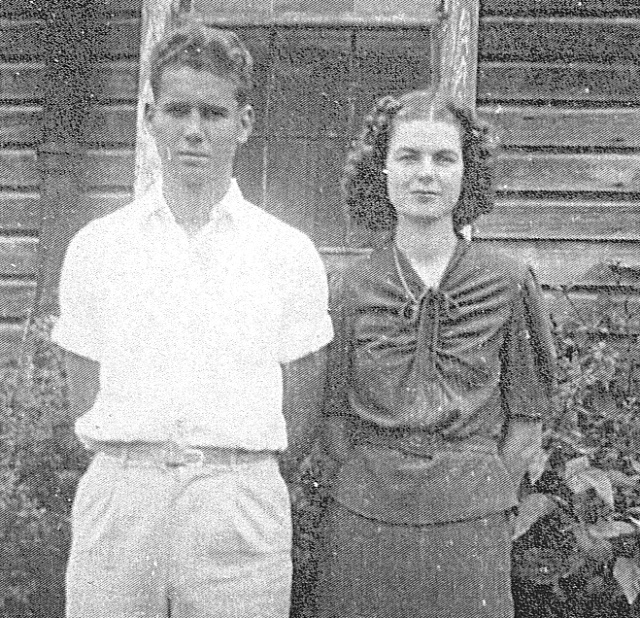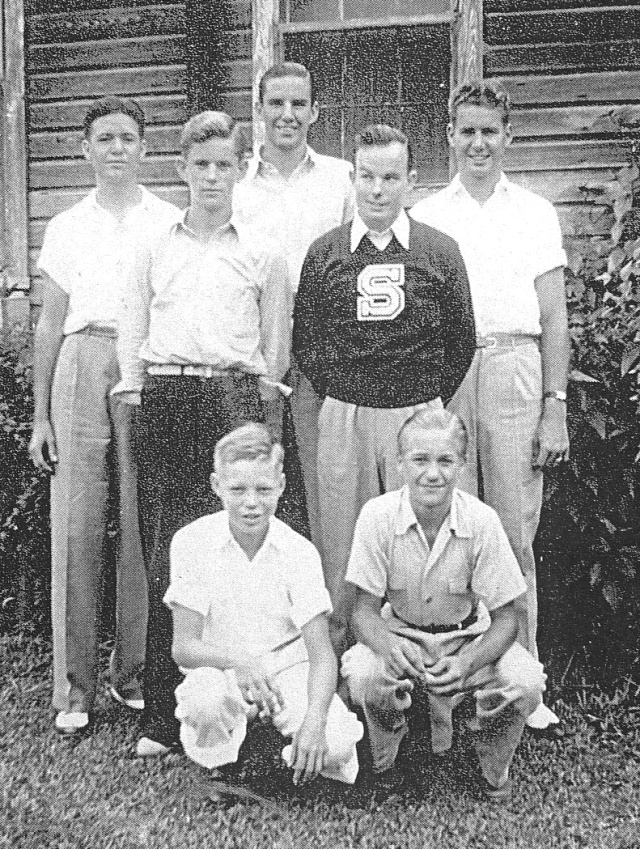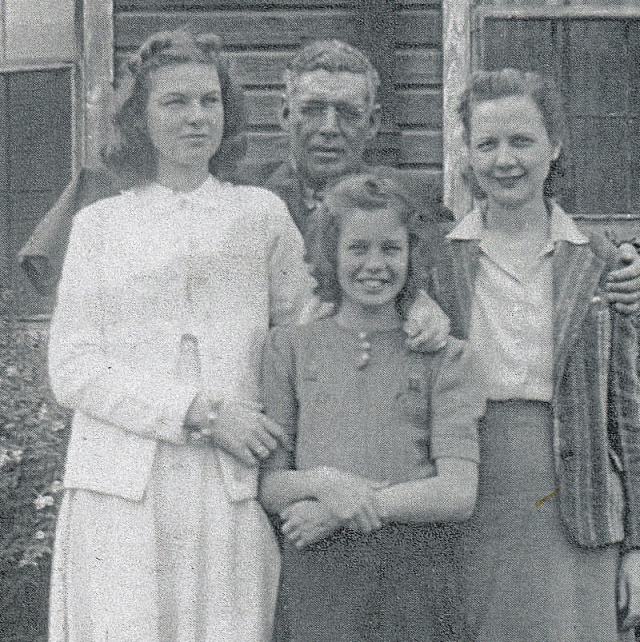HISTORY OF PASCO COUNTYLacoocheeGhost Town of Lacoochee RevisitedAmid Signs of a New CommunityBy NELL M. WOODCOCK When Peggy Callray and husband Frank Callray of Indialantic, Florida, visited Lacoochee in September 2012 she clutched a manila envelope in her hand. It held pictures and newspaper clippings about the logging town she first visited during World War II. She was the young bride of William Reeves (Bee Wee) Hyatt Jr., who had joined the U. S. Navy. He died in 1961 at age 40. Bee Wee was the son of Alice Harris Hyatt (1900-1975) who worked at Lacoochee’s postoffice and William R. Hyatt, Sr. (1895-1967) who worked for Cummer Sons Cypress Company. Their home was in the Cummer quarters next to the company’s payoffice a block or so away from the company’s sawmill complex. None of that exists today. On Peggy’s first visit, the town had a thriving business section. Stores lined a section of State Road 525. Buses stopped at Abe’s Drug Store. Passenger trains and agents stations were serviced by two major railroad companies. Railcars loaded with cypress logs stood on side rails. Today a sign painted on the front of a two story frame building shows that “Howard’s Bar” was one of them. The sign is faded and the building sags. Buses no longer stop and the rail tracks are empty. Gone is “Tin Town,” an extension of the business section across the railroad tracks. A modern brick convenience store has replaced Vivian’s Theater, which dated back to the silent movies. A two-story Woodmen of the World Lodge disappeared with the mill. Gone is the area’s name sake, the two-story Sanderson home with its tin roof and tin siding. It was unique in a town where single story homes with cypress siding and shingles were the norm. After the Callrays’ side trip to Lacoochee in September they reached their destination seven miles to the south. Dade City’s Methodist Church and the 26th annual Lacoochee Reunion. Here they shared Peggy’s story with others, including EPHS staff Like Peggy, former Lacoochee residents have gathered at these reunions for more than a quarter of a century to do just that. Share pictures and reminisce about that logging town and the ancient cypress trees that sustained it. Once the cypress in Florida were depleted Cummer ceased its logging operations in 1959, closed its last sawmill in the state and the town began to disappear. In contrast, while their congregations have changed, three churches some of these former residents help build have stood their ground. The Church of God in town, The First Baptist Church of Lacoochee with its cemetery in the Cummer quarters, and Oak Ridge Baptist Church several blocks east just off Coit Road In this area along Coit Road where school buildings once faced Cummer’s lumber yard, modern homes have sprung up along side the old ones. With new Houses for Humanity built in rows and land being prepared for more construction. Today Cummer Road enters the community at U.S. 301south of the SR 575 entrance. It funnels traffic past a modern Lacoochee Elementary School, the 33-acre Stanley park and connects to a road that leads to the old Cummer sawmill site. C&N Foundation Technologies, Inc. is located at the corner of U.S. 301 and Cummer Road. C&N provides local employment opportunities with its foundation and sinkhole repair service. A new community center is slated for construction on the park site. It will house Lacoochee’s popular Boys & Girls Club and public services departments. Stanley Park’s name is a tribute to Jesse Stanley (1902-1995). Jesse was a champion boxer while in the Army during WWI. He came to Lacoochee in 1923 from his native Missouri. He worked for Cummer until the mill closed in 1959. During the 50’s and 60’s he coached boxing and baseball for the youth in Lacoochee and Dade City. Following is an excerpt which picks up the Bee Wee Hyatt story. “Bee Wee Hyatt later transferred from the U. S. Navy to the U. S. Air Force and was an Air Force Master Sergeant at the time of his death in 1961. During the time he was stationed in Orlando, Florida, he was a member of the paratrooper-frogman Rescue Group involved in the recovery of astronauts landing in the Ocean on their return to earth from outer space.” The end.    Pictures courtesy of Peggy Callray |
